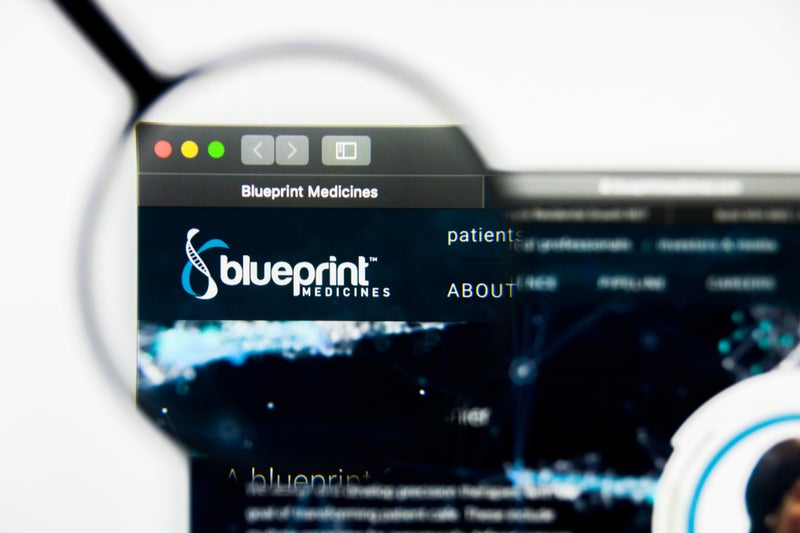The occurrence of intracranial bleeds in Blueprint Medicines’ Phase I trial for avapritinib in advanced systemic mastocytosis (AdvSM) has evoked expert concern, although there are divided perspectives on potential approval and uptake should the events appear in an ongoing Phase II.
AdvSM is a rare condition indicated by the uncontrolled accumulation of neoplastic mast cells (MCs) in various organs, causing impairment of organ function, drug resistance and a poor prognosis.
If the bleeds were of particularly high severity, one doctor said they could be a roadblock to approval. However, two Phase II PIONEER (NCT03731260) investigators and a second doctor had stronger approval optimism, with all doctors noting the efficacy results from the 80-patient Phase I EXPLORER (NCT02561988) trial as clinically significant.
Whilst three doctors said the events as seen in updated data from the EXPLORER results were worrisome and likely serious, two investigators on the 112-patient Phase II PIONEER trial for avapritinib said they did not expect the events to appear in this study. They explained the bleeding events in the EXPLORER trial were associated with patients with a low platelet count. An analyst report also stated there was a correlation between the bleeds and thrombocytopenia.
Whilst the Phase I recruited AdvSM patients, Phase II has patients in indolent and smouldering systemic mastocytosis (ISM and SSM). AdvSM shows worse prognosis and is associated with decreased life expectancy, whereas ISM and SSM are not.
Doctors were perplexed by the PIONEER trial protocol that excluded SSM patients from the dose-escalation phase, noting that ISM and SSM patients are not usually differentiated between in medical practice. They also noted they could not extrapolate data from the Phase I to Phase II because the trials test on different populations and accordingly measure different endpoints. Initial data from the PIONEER study are expected in 2H19, according to the aforementioned report.
How well do you really know your competitors?
Access the most comprehensive Company Profiles on the market, powered by GlobalData. Save hours of research. Gain competitive edge.

Thank you!
Your download email will arrive shortly
Not ready to buy yet? Download a free sample
We are confident about the unique quality of our Company Profiles. However, we want you to make the most beneficial decision for your business, so we offer a free sample that you can download by submitting the below form
By GlobalDataA 15 June company press release stated Blueprint intends to file a New Drug Application (NDA) to the FDA for avapritinib for the treatment of AdvSM in the 1Q20. Approval could come later that year, according to the aforementioned report. Blueprint has a market cap of $3.82bn. Avapritinib is expected to achieve peak sales of $1.8bn, according to the report.
Intracranial bleeds flare concerns
The June press release states intracranial bleeding occurred in seven of 69 patients at the data cut-off point on 2 January. The analyst report equates this to 10% of the patent population.
Dr Vishnu Garla, practitioner, UMMC Department of Medicine, Jackson, Mississippi, said the proportion of intracranial bleeding effect is unacceptable and doctors would likely only consider prescribing a drug that could produce this side effect to patients with diseases such as mast cell leukaemia. Dr Theoharis Theoharides, director, Molecular Immunopharmacology and Drug Discovery Laboratory, Tufts University School of Medicine, Boston, Massachusetts, agreed the side effect was unexpected and worrying.
However, the severity of bleeds is an important factor to consider in terms of approval and uptake, Garla said. If these are small intracranial bleeds, the drug’s efficacy may outweigh safety concerns in terms of its overall risk-benefit profile, he explained. Garla said the FDA would likely seek more information premarket on the severity of intracranial bleeds observed in EXPLORER.
A third doctor said he was doubtful of the possibility of the bleeds being small and even 10% of the population is concerning. Diagnosing an intracranial bleed requires brain imaging so unless regular brain imaging was mandated in EXPLORER, patient symptoms must have been severe enough to require on-the-spot imaging, he explained. The trial page on ClinicalTrials.gov does not mention a brain imaging protocol. As the results state that two of the patients had to cease treatment altogether, the bleeds must have been quite significant, the doctor said.
Five of the six patients were able to resume treatment, according to the press release, which did not state the bleed severity. A company spokesperson did not comment on this point. The release also noted that six of the seven patients suffered from thrombocytopenia and thus had a low blood platelet count. The remaining one had suffered a life-threatening fall, according to the release. There are no patients enrolled on PIONEER with a low platelet count so intracranial bleeding is not expected, the second investigator said.
Of the six patients enrolled at the second investigator’s centre, none had experienced either intracranial bleeding or cytopoenias, the second investigator said. The first investigator did not disclose numbers but said the side-effect profile for PIONEER seemed safer than in EXPLORER.
Theoharides agreed low platelet count could account for the intracranial bleeding but was cautious on the safety results are given by the second investigator. ISM and SSM patients have a lower burden of mast cells compared to patients with AdvSM, and some reduction in AEs will occur purely because of that lower number, he said. Garla added the degree and location of bleeds often determine mortality and morbidity. The platelet count explanation, therefore, does not alleviate safety concerns, he said.
All three doctors, however, noted the drug had achieved clinically significant results in EXPLORER. The drug attained an overall response rate (ORR) of 77% and 23% of patients experienced complete remission with full or partial hematologic recovery, according to the press release. According to the report, the only approved agent for AdvSM is Novartis’ Rydapt (midostaurin), which shows an ORR of just 17%.
The first investigator said the tremendous unmet need for AdvSM, combined with excellent efficacy results and generally positive safety results from EXPLORER excepting intracranial bleeds, supports approval prospects. Theoharides agreed the drug should be approved. The second investigator confirmed approval could be expected by YE20. The third doctor declined to comment on approval prospects.
Doctors stumped by trial protocol
All experts found an issue with the design of the dose-escalation phase of PIONEER, from which SM patients are excluded. Garla said many doctors do not differentiate ISM and SSM at all. Since there is a lack of consensus among experts on the exact difference for ISM and SSM, it is unclear how the trial is distinguishing between the patients, explained Theoharides.
The first PIONEER investigator said the trial defines ISM and SSM patients according to World Health Organization (WHO) diagnostic criteria. The WHO states all SM patients must display either one major and one minor or three minor criteria, which includes mast cell burden.
The key difference is that SSM patients display more extensive mast cell involvement than ISM patients, the investigator explained. The third doctor noted both are treated the same in clinical practice. Physicians see very few SM patients overall so differentiating between ISM and SSM is impractical and unnecessary, he explained. Garla said even considering the WHO criteria, it is still unclear why SSM patients were excluded from dose escalation.
The doctor declined to comment on what effect the exclusion of SSM patients would have on the PIONEER trial, whilst Garla, Theoharides and the two investigators did not comment. The spokesperson said a uniform population is needed to effectively establish the optimal dose in PIONEER.
Unclear predictions for PIONEER
In terms of further PIONEER expectations, experts demurred based on EXPLORER data. EXPORER indicated, in a subgroup of 15 ISM/SSM patients, a 50% per cent reduction of serum tryptase, bone marrow mast cells and KIT D816V mutation allele fraction, according to the June press release.
The first investigator and Garla said the reduction in mast cell burden was impressive, with Garla adding the results were clinically significant. But the investigator said because the trial was single-armed, it is difficult to predict how well avapritinib will perform compared to standard of care (SOC) in PIONEER.
The different primary patient populations and disease severities targeted in the two trials, as well as primary endpoints, make it impossible to predict PIONEER efficacy results based on EXPLORER data thus far, said Garla and the third doctor. PIONEER’s primary endpoint is mean change in ISM Symptom Assessment Form (ISM-SAF) total symptom score (TSS), whereas the primary endpoints of EXPLORER included maximum tolerated a dose of avapritinib and the number of patients with SAEs, according to ClinicalTrials.gov.
by Ayisha Sharma in London
Ayisha Sharma is a Reporter for Clinical Trials Arena parent company GlobalData’s investigative journalism team. A version of this article originally appeared on the Insights module of GlobalData’s Pharmaceutical Intelligence Center. To access more articles like this, visit GlobalData.










Related Company Profiles
Tufts University School of Medicine
Ism
Pioneer Corp
ORR Corporation
World Health Organization